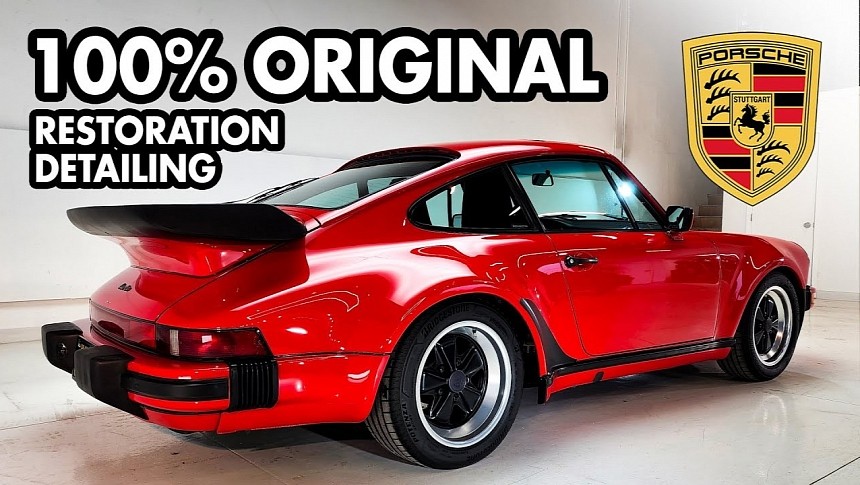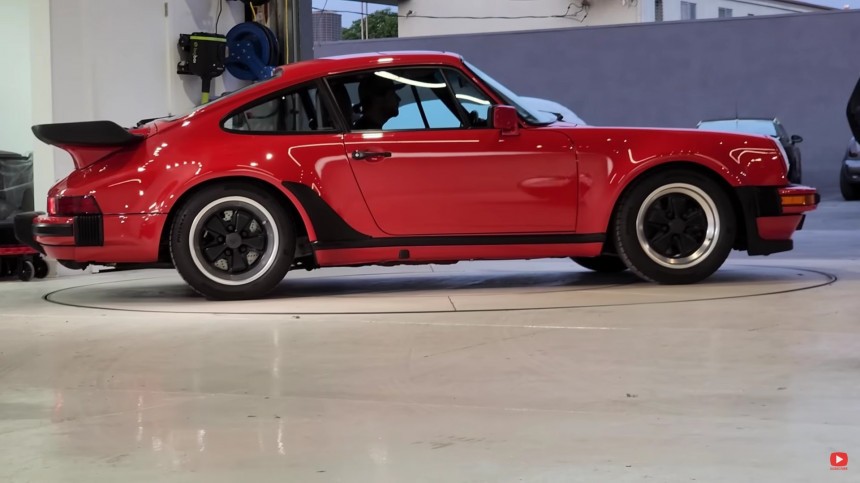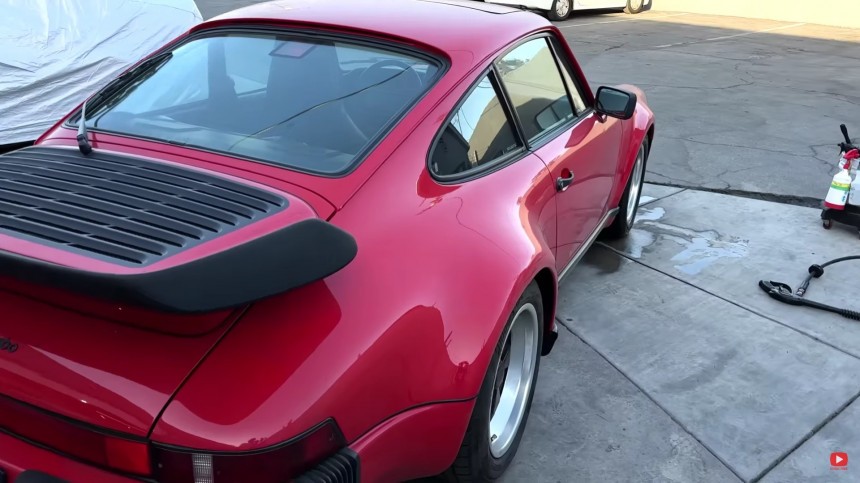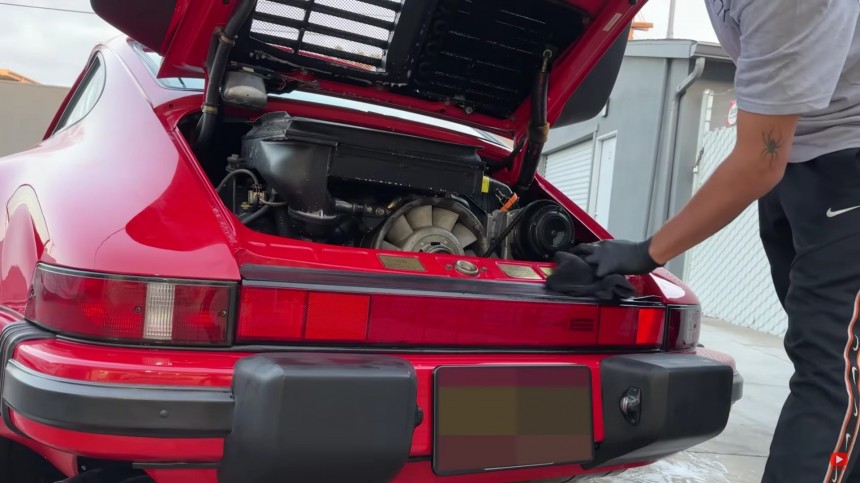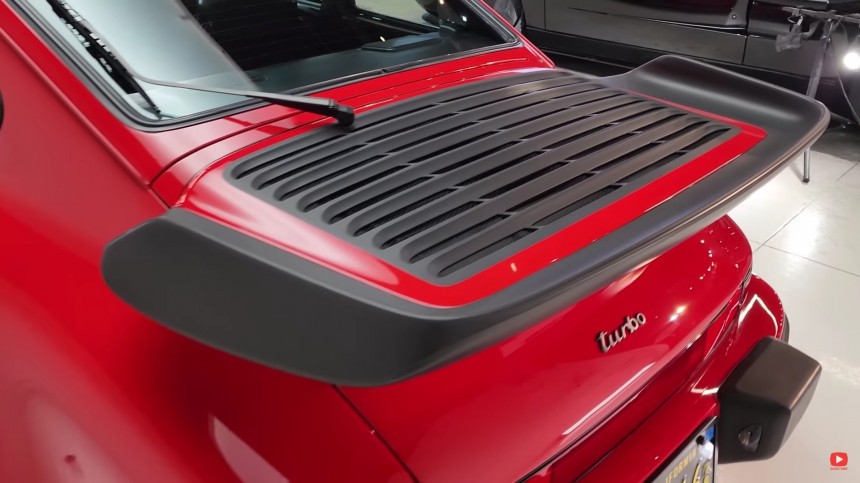The seventies were a dismal period for American motoring – for reasons we’d rather not invoke here because no one likes the ugly part of history. On the other side of Planet Combustion, things were going splendidly for performance. Among the myriad iconic automobiles that emerged during those geopolitically transforming years, one stands apart (some might even say above) from everyone else. Porsche went strong that decade, solidifying its name as a racing superpower.
Large-scale carmakers do what they do – build cars, that is – to sell them, and track supremacy is a fabulous incentive for showroom traffic. Porsche capitalized on this wisdom manifest by doing the until-then-unthinkable. The Zuffenhausen engineers built race-winning cars, and homologation rules sped up the process of transferring the technology into the road-legal versions.
The Porsche 911 Turbo (call sign 930) of 1975 resulted from such treatment: the 3.0-liter flat-six engine was no longer left to draw in atmospheric air but was upgraded with a massive exhaust-gasses-powered turbine.
The immediate result was a 254-hp / 260-PS ogre that bowed to no one. Although unassumingly and deceptively tame in appearance, the turbocharged German was a cutthroat of a beast, the fastest road car in its time. It became Porsche’s first mass-produced supercar and gained an infamous war cry nickname: the Windowmaker.
152 mph (245 kph) top speed and highly unrelenting turbo behavior would be the main reasons behind the not-so-subtle moniker of the bucking Rearing Horse from Stuttgart. To keep the car on the road – allegedly – the wrench-turning elves from Porsche devised the whale tail rear wing, which had two primary functions.
The first and most obvious one was generating downforce while scooping air into the rear-mounted engine. The aerodynamics calculations were correct; the spoiler did its job well. Too well, in fact: the already rear-biased 911 was even more nose-happy now, with the extra weight on the back.
This made the steering very light and not too precise in the hands of an inexperienced driver. Furthermore, the engine weight on the rear axle gave a very oversteering tendency to the already untamed machine.
And yet, despite all this, the 930 was a hit: initially planned as a 500-unit production, the orders quickly surpassed that number. Porsche made a modification to the initial version to meet demand and emphasize the road-ruling character of the Turbo.
During the car’s 14-year-long production, the 1978 change is by far the most radical: a new, 3.3-liter flat-six was installed (replacing the two-year-old 3.0-liter boxer), and an intercooler was added. This meant a boost in power of nearly 25%, to 297 hp (300 PS), and a torque of 304 lb-ft (412 Nm).
With this much firepower in the back, the performance jumped from 5.7 seconds for the 0-62 mph (100 kph) sprint to 5.4 seconds. The top speed increased from 152 mph to “over” 162 mph (260 kph). The figures are extracted from the official sales brochures for the US-spec Porsche 911 Turbo of 1979 (the previous model year was identical).
Note to Germanically-precise gearheads and readers: while official sources – such as Porsche’s website – state a power rating of 254 hp / 260 PS and 245 lb-ft (332 Nm) or torque, the US dealerships literature of the period announce a detuned 234 hp (237 PS).
A four-speed manual gearbox put the power down on the rear wheels, and the intercooled enlarged-displacement model also received an even bigger spoiler above the trunk. This aero feature gave birth to another legendary street name for the 930 Turbo – the Tea Tray.
Out of the 23,000 or so units assembled during its unusually long production, only a handful of all-original 930 Turbo Porsche 911s are still around. As one might imagine, such a classic automobile is rarely seen on the roads.
It wouldn’t be an exaggeration to assume that an untouched survivor is more regularly encountered at car shows, meetings, gatherings, and other forms of flat-six congregations. An automobile needs extensive periodical detailing sessions to be fit for such an appearance.
The I Am Detailing team of car spa specialists from Costa Mesa, California, had a go at one Guards red example of a Porsche 911 Turbo of the first generation. Although the video of the meticulous detailing operation doesn’t reveal any particular build dates, the massive intercooler on the driver’s side of the engine bay shows that this splendid sportscar is built after 1978.
The owner is definitely a dedicated connoisseur, judging by the overall state of the automobile. Still, even so, the car cosmeticians have done a masterful job. Although not on the cheap side – the dry ice cleaning alone costs around $2,800 – the results are definitely worth the costs.
It does put a big smile on everyone’s faces – the car shining speckless, spotless, scratch-free, and dent-free – and it more than pays homage to what Porsche did nearly five decades ago. After all, we need to remember what the competition was at the time: Lamborghini had just launched the Star Wars-like Countach, and Ferrari had the 512 BB, to name but two of the historic archrivals of the German brand.
The Porsche 911 Turbo (call sign 930) of 1975 resulted from such treatment: the 3.0-liter flat-six engine was no longer left to draw in atmospheric air but was upgraded with a massive exhaust-gasses-powered turbine.
The immediate result was a 254-hp / 260-PS ogre that bowed to no one. Although unassumingly and deceptively tame in appearance, the turbocharged German was a cutthroat of a beast, the fastest road car in its time. It became Porsche’s first mass-produced supercar and gained an infamous war cry nickname: the Windowmaker.
The first and most obvious one was generating downforce while scooping air into the rear-mounted engine. The aerodynamics calculations were correct; the spoiler did its job well. Too well, in fact: the already rear-biased 911 was even more nose-happy now, with the extra weight on the back.
This made the steering very light and not too precise in the hands of an inexperienced driver. Furthermore, the engine weight on the rear axle gave a very oversteering tendency to the already untamed machine.
During the car’s 14-year-long production, the 1978 change is by far the most radical: a new, 3.3-liter flat-six was installed (replacing the two-year-old 3.0-liter boxer), and an intercooler was added. This meant a boost in power of nearly 25%, to 297 hp (300 PS), and a torque of 304 lb-ft (412 Nm).
With this much firepower in the back, the performance jumped from 5.7 seconds for the 0-62 mph (100 kph) sprint to 5.4 seconds. The top speed increased from 152 mph to “over” 162 mph (260 kph). The figures are extracted from the official sales brochures for the US-spec Porsche 911 Turbo of 1979 (the previous model year was identical).
A four-speed manual gearbox put the power down on the rear wheels, and the intercooled enlarged-displacement model also received an even bigger spoiler above the trunk. This aero feature gave birth to another legendary street name for the 930 Turbo – the Tea Tray.
Out of the 23,000 or so units assembled during its unusually long production, only a handful of all-original 930 Turbo Porsche 911s are still around. As one might imagine, such a classic automobile is rarely seen on the roads.
The I Am Detailing team of car spa specialists from Costa Mesa, California, had a go at one Guards red example of a Porsche 911 Turbo of the first generation. Although the video of the meticulous detailing operation doesn’t reveal any particular build dates, the massive intercooler on the driver’s side of the engine bay shows that this splendid sportscar is built after 1978.
The owner is definitely a dedicated connoisseur, judging by the overall state of the automobile. Still, even so, the car cosmeticians have done a masterful job. Although not on the cheap side – the dry ice cleaning alone costs around $2,800 – the results are definitely worth the costs.
It does put a big smile on everyone’s faces – the car shining speckless, spotless, scratch-free, and dent-free – and it more than pays homage to what Porsche did nearly five decades ago. After all, we need to remember what the competition was at the time: Lamborghini had just launched the Star Wars-like Countach, and Ferrari had the 512 BB, to name but two of the historic archrivals of the German brand.
